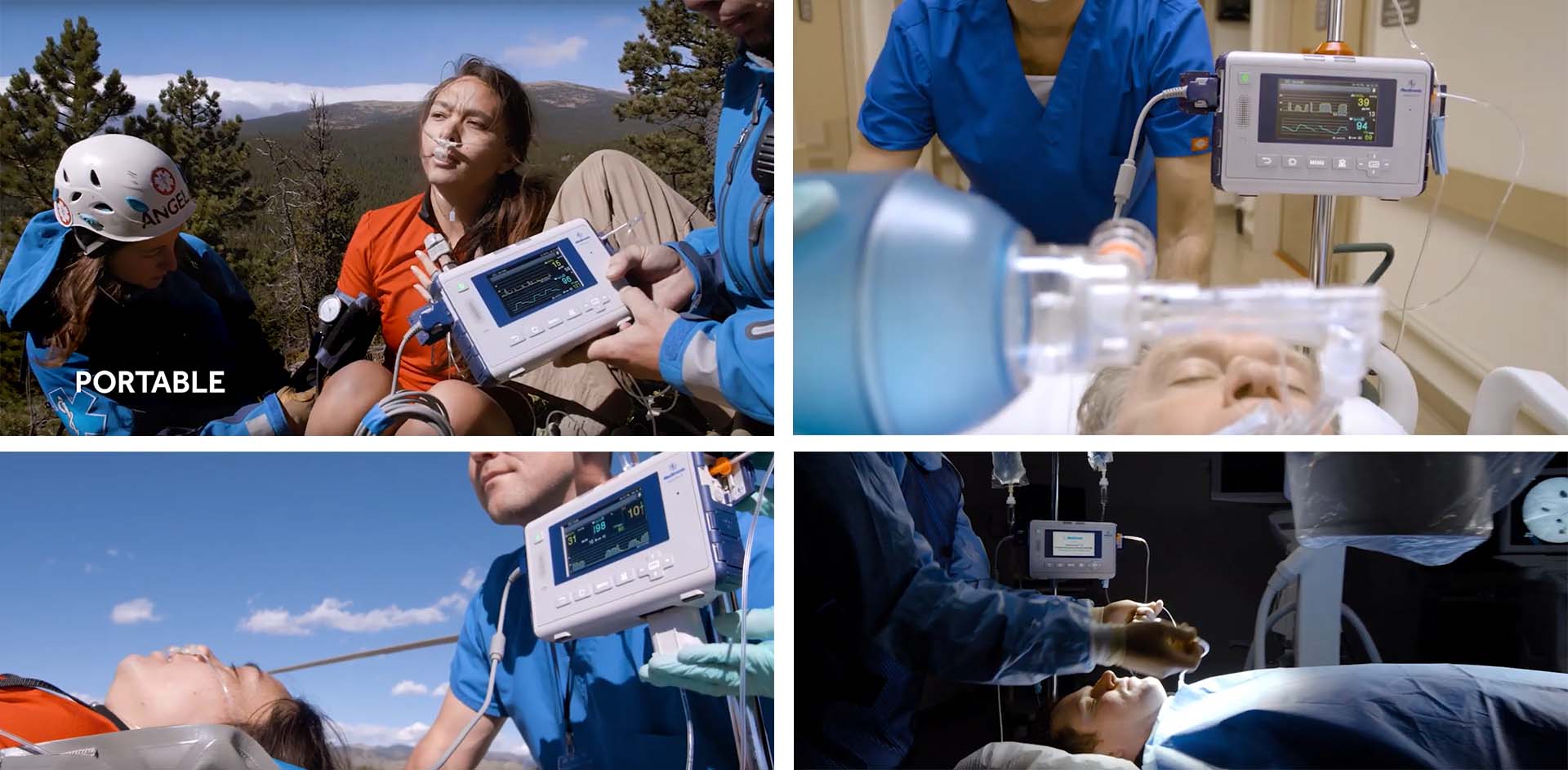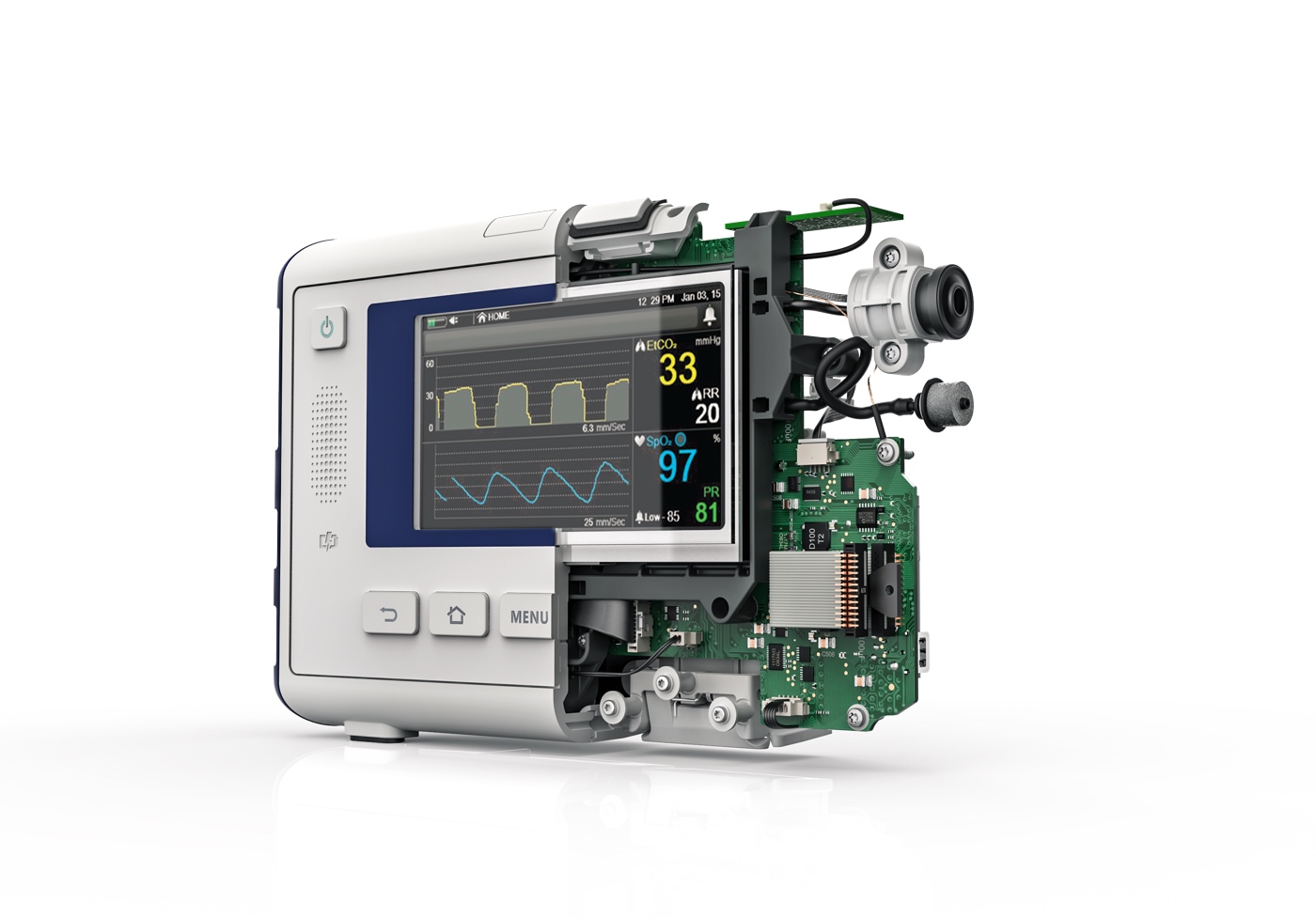The full-blooded realization of a product
Some projects are fast and furious, others take up a lot of time and attention (for the record, we prefer the second kind). Medtronic Capnostream™ 35 was one of these projects — and preoccupied us for a little bit over a year. It is a portable respiratory monitor that measures CO2, SpO2, respiration rate and pulse rate, which are critical for receiving real-time risk alerts, especially when a person is unconscious. This device gets reliable access to a patient’s respiratory status in virtually any clinical setting, from general care floor to ambulance and airborne. The biggest challenge of the project was not to get lost in a constant aligning with the client on every single detail (and a medical device usually has a lot of them) — and create a design that is more than just a sum of the details but a full-blooded realization of the product.

The value of a solid design methodology
The initial research stage isn’t always about consumers; often the goal is to create a full list of requirements affecting the future design. In our case, it was a long list: How well is it sealed? What is the size and amount of connectors? How many of them are always connected and which are connected only sometimes? And so forth. We also studied use cases and, of course, numerous medical regulations.

The power of an elaborated design process
Further, we studied the design DNA of the company by researching Medtronic products, especially the other monitor — in order to create a logical visual transition between two devices. We developed three design concepts to choose from. It’s always nice to involve clients in the process and give them options to pick from. After the choice was made, we went into the long process of engineering and pre-SVR — far less exciting but the most important part of the project. During that stage all kinds of things happened, our electronic engineer fell from a ladder, broke both hands and had to take a leave for two months (he is OK now). But thanks to our elaborate design process, we went through all that complex engineering without getting into corners and eventually created a masterpiece of a medical device. Overall, it was a good year.

